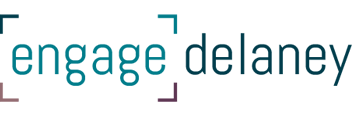The Value of Third-Party Reporting
Applying strategy when managing a project goes beyond planning, facilitating, and analysis and reporting. Engaging a neutral third party to facilitate discussion, gain input and lead the preparation of your project reports provides an alternate way to deliver important information to interested and affected parties that can result in tangible and intangible benefits.
Some of those benefits include:
- neutrality – a neutral approach, does not advocate for a particular result, but rather to assist with communicating the results or what we learned from participants.
- professional insight, expertise, and perspective in reporting,
- communicating difficult messages without associated emotion or vested interest, and;
- taking an active role in communication with interested and affected parties to improve communication and to keep dialogue focused on relevant issues.
When a report is delivered by a neutral third party, the focus is not on the outcome of the discussion but on ensuring that the findings and resulting message or direction has been presented clearly and accurately. Creating an environment of neutrality through third-party reporting can be helpful in preventing or resolving existing or pre-existing conflict with and among interested and affected parties.
Neutral third parties can assume a variety of roles, including facilitating discussions, providing those most interested and affected with the merits and value of their claims, and assisting with creative problem-solving. When a report has negative consequences or is perceived to have, it is more often the reason for removing or withholding trust from the messenger than positive information is for placing trust. Third-party reporting has no vested interest and can maintain its neutrality even when emotion is present.
Below are three tips to maximize the value of third-party reporting for your project:
- Be strategic when setting your objectives for this paid resource. Leverage the neutrality of a third party and their ability to create unbiased environments for engagement and discussion.
- Create a clear report outline that identifies the report structure, key content and the brand that the report will follow. If it is branded as a third-party report, this can be helpful in providing distance from difficult discussions; however, you may not have the flexibility to change the content if suggested amendments result in an altered view of the process that was followed, or of the results that were found.
- Assign the task of editing the report to one or two individuals. Too many cooks in the kitchen can create confusion, delays in reporting timelines and additional rounds of edits. Time is money so consolidate your comments and be efficient in your feedback. Professional insights, varied perspective and associated expertise of neutral third-party reporting will not only broaden the reach to interested and affected parties but may result in an increase in the credibility of the message received by those you are engaging.




